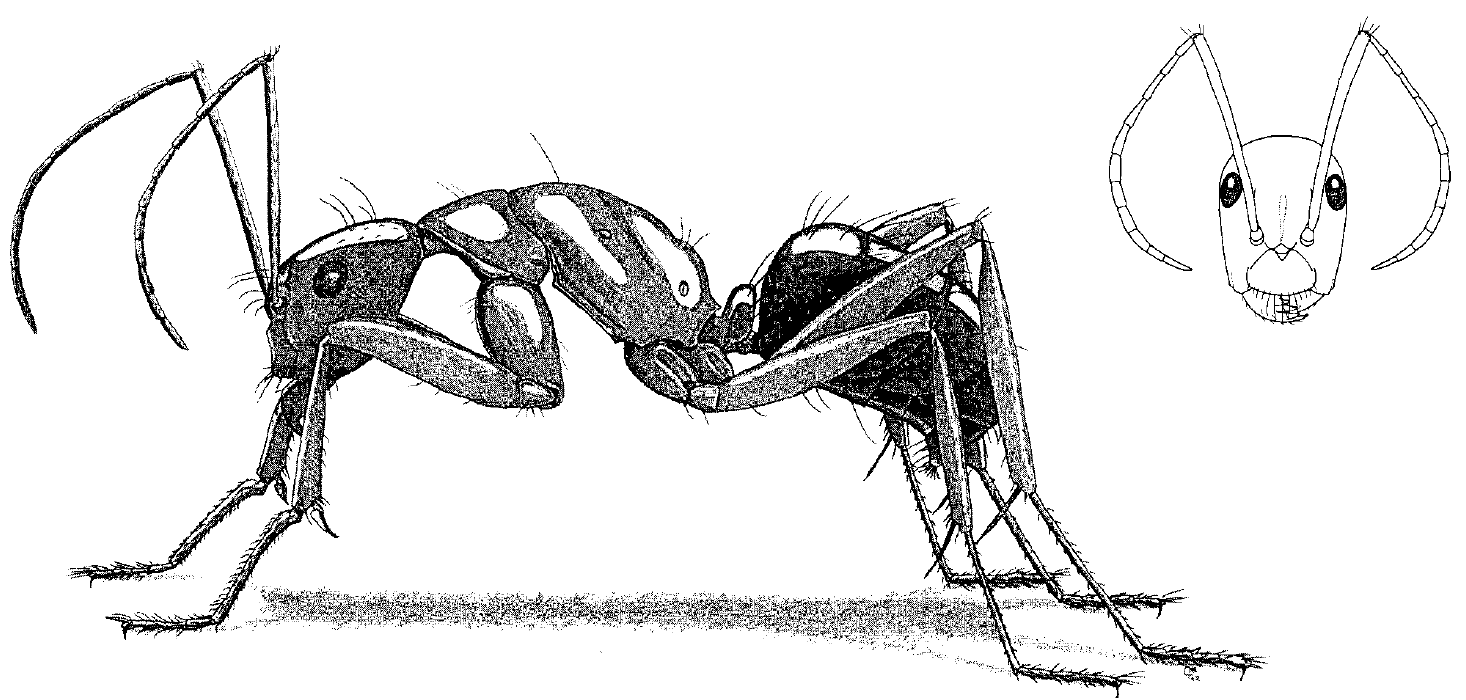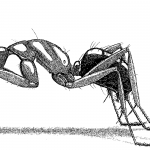
Pale brownish-yellow to orangish-brown, alitrunk often slightly paler than head and gaster, mandibles usually darker than head, antennae slightly darker, legs concolorous; body with extremely minute microsculpture, surface smooth and glossy. The very sparse gastral pubescence and head the same color as alitrunk will distinguish this species.
This large, uniformly pale-colored species is moderately common in Ohio. The name refers to chestnut, the predominant color of this ant. Variously described as a “handsome” or “beautiful species.” Named by the French entomologist Pierre Andre Latreille (1762-1833) in 1802.
Wheeler (1910) stated that he could find no difference between C. americanusand C. castaneus other than a very slight distinction in the cephalic sculpture and the color. Creighton ( 1950) supposedly found much greater differences: “The head of the major worker of americanus is slightly broader than long and it lacks the very prominent median impression or excavation which is present in castaneus.The clypeus of the major [of castaneus]¬†is virtually ecarinate, although there is a small ridge immediately in advance of the frontal area which may represent the carina.”
But presence of a carina along with the flattened base of the antenna! scape, another feature at most weakly developed in castaneus, are the main key characters Creighton used to differentiate the subgenus Tanaemyrmex, where he placed castaneus. He goes on to say ” … while there may be some objection to the transfer of castaneus to the subgenus Tanaemyrmex, there can be none to according americanus the specific status which it deserves.”
I have critically compared all castes of these two species and I agree that they should be considered distinct species, but they are clearly very closely related and should, in no way, be placed in different subgenera. I have, therefore, moved castaneus back into Camponotus s. str. with americanus. Note the similar preferred nesting sites in soil as opposed to the usual sites in wood for otherCamponotus, lending further credence to the close relationship.
Colonies are moderately populous (Wheeler, 191 0a). Cole ( 1940b) reports on a colony in Tennessee of 200 workers, plus alates
Size
Nuptial Flight Dates
Habitat
Food
Behavior
Nesting Information
Verified Locales (counties)
Brown, Clermont, Franklin, Hamilton, Hocking, Montgomery, Muskingum, Warren,


